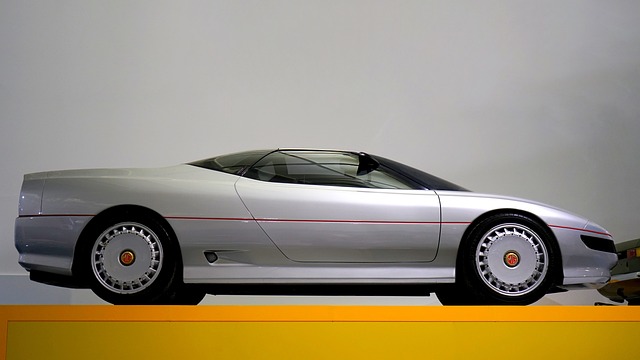In today’s fast-paced world, innovation in product design is key to staying ahead of the competition. AI is revolutionizing the way businesses approach product design and prototyping, bringing new levels of efficiency and creativity to the process. By leveraging AI-powered design tools, machine learning algorithms, and advanced simulation techniques, companies can streamline product development, improve user-centered designs, and rapidly prototype solutions. Whether you are working in industrial design or creating a new consumer product, AI is transforming every stage of the process, from initial concept generation to final prototyping.
AI-Powered Design Tools
AI-powered design tools are transforming traditional methods of product creation, offering innovative solutions for both designers and engineers. These tools rely on algorithms that can analyze data, learn from previous designs, and generate new concepts based on specific criteria. For example, generative design is a cutting-edge AI-driven approach that allows designers to input parameters like materials, cost, and functionality, and the AI generates multiple design options.
This technology speeds up the design process by removing many of the manual tasks traditionally involved. AI can quickly iterate different design possibilities, allowing for rapid experimentation and improvement. Moreover, AI-powered design tools integrate seamlessly with CAD software, enabling designers to explore complex shapes and structures that would be difficult or time-consuming to create manually.
Another advantage of these tools is their ability to analyze user data and predict how a product will be received in the market, optimizing the design for better user experience. AI helps ensure that every aspect of the product meets the desired specifications, whether it’s in terms of durability, aesthetics, or user interaction.
Machine Learning for Product Design
Machine learning plays a pivotal role in product design by helping teams better understand and optimize their designs. By analyzing large datasets of previous designs, performance metrics, and user feedback, machine learning algorithms can identify patterns and suggest improvements. This allows designers to make more informed decisions about product features, materials, and performance, resulting in higher quality products.
One of the key benefits of machine learning in product design is its ability to reduce the number of prototypes needed. Traditionally, designing a product involved several rounds of prototyping and testing, which could be time-consuming and costly. Machine learning can simulate these processes virtually, analyzing thousands of design variations and providing feedback on what will work best. This not only accelerates the design cycle but also reduces production costs.
Additionally, machine learning models can predict potential issues that might arise during production or end-user use, helping companies to address them early on in the design phase. This predictive capability ensures that products are not only functional but also safe and reliable when they hit the market.
AI for Rapid Prototyping
Rapid prototyping is one of the most critical aspects of product design, and AI is making it even faster and more efficient. Traditionally, prototyping involved building physical models or using CAD software to create digital representations. With AI-driven rapid prototyping, businesses can leverage algorithms that generate and optimize prototypes based on design specifications, material properties, and even user feedback.
AI enables real-time adjustments to prototypes, allowing designers to modify and test new versions instantly. This rapid iteration process significantly cuts down on the time it takes to bring a product from concept to market. Moreover, AI can simulate real-world usage conditions, providing valuable insights into how a product will perform in various environments. This helps refine designs before they move to the production stage.
In addition to speeding up the prototyping process, AI also helps reduce waste by suggesting the most efficient use of materials. Designers can explore different design alternatives with minimal risk and cost, resulting in more sustainable and cost-effective production.
Generative Design with AI
Generative design is an AI-driven approach that allows designers to explore a wide array of design possibilities, some of which might be impossible for a human to conceive. By setting up design constraints such as weight, material, cost, and performance requirements, the AI generates multiple design alternatives. This process enables designers to uncover new, innovative solutions that would otherwise go unnoticed.
Generative design is particularly valuable for industries like automotive and aerospace, where optimizing weight and material efficiency is crucial. The AI takes into account not only the functional requirements but also the production methods, such as 3D printing or CNC machining, ensuring that the designs are manufacturable.
Moreover, generative design reduces the time spent on trial-and-error testing. Designers can quickly evaluate a vast range of design options and focus on the most promising ones. This leads to more innovative products and quicker time to market, giving companies a significant competitive advantage in their industry.
AI-Enhanced CAD Software
CAD (Computer-Aided Design) software has long been a staple of product design, but with AI integration, its capabilities have expanded dramatically. AI-enhanced CAD software can analyze design constraints and suggest improvements in real-time, helping designers create more efficient and functional products. These tools assist with everything from structural analysis to material selection, optimizing designs before they are even built.
One of the most significant advantages of AI-enhanced CAD is its ability to automate repetitive tasks. For example, instead of manually adjusting dimensions or checking for design inconsistencies, AI can do this automatically, allowing designers to focus on more creative aspects of the project. This not only speeds up the design process but also reduces the likelihood of errors.
Furthermore, AI-powered CAD software can integrate with simulation tools to predict how a product will behave under different conditions, such as stress, heat, or impact. This predictive modeling helps refine designs and ensures that products will meet the necessary safety and performance standards.
AI for Virtual Prototyping and Simulation
Virtual prototyping, powered by AI, is changing how companies approach testing and validation. Instead of building physical prototypes for every iteration, AI allows designers to create virtual models and simulate their performance in real-world conditions. This not only saves time but also reduces costs associated with physical prototyping.
AI-driven simulation tools can analyze a product’s behavior under various environmental factors, such as temperature, pressure, and humidity. These simulations provide valuable insights into how a product will perform in the real world, allowing designers to make adjustments before committing to expensive manufacturing processes.
Additionally, virtual prototyping facilitates collaboration between design teams, as they can share and review designs in real-time, regardless of geographical location. This collaborative environment speeds up the feedback loop and ensures that all stakeholders are aligned throughout the design and prototyping phases.
AI for User-Centered Product Design
AI’s ability to analyze vast amounts of data makes it an invaluable tool for user-centered product design. By collecting and analyzing user feedback, preferences, and behavior patterns, AI helps designers create products that meet the specific needs of their target audience. This ensures that the end product is not only functional but also highly intuitive and user-friendly.
For example, AI can identify trends in user behavior and suggest design changes that enhance the overall user experience. Whether it’s improving the ergonomics of a device or adding features that users didn’t know they needed, AI helps designers stay one step ahead of market demands.
Moreover, AI tools can predict how users will interact with a product, allowing designers to make informed decisions about design elements such as color, shape, and functionality. This predictive power leads to better products that resonate with consumers and drive higher satisfaction rates.
Conclusion
AI is undeniably reshaping the product design and prototyping landscape. From AI-powered design tools and machine learning algorithms to rapid prototyping and virtual simulations, AI enables businesses to innovate faster, reduce costs, and create products that meet both functional and user-centered goals. By integrating AI into every stage of the design process, companies can stay competitive, deliver high-quality products, and respond swiftly to market changes. As AI continues to evolve, its role in product design will only grow, driving the future of innovation across industries.






